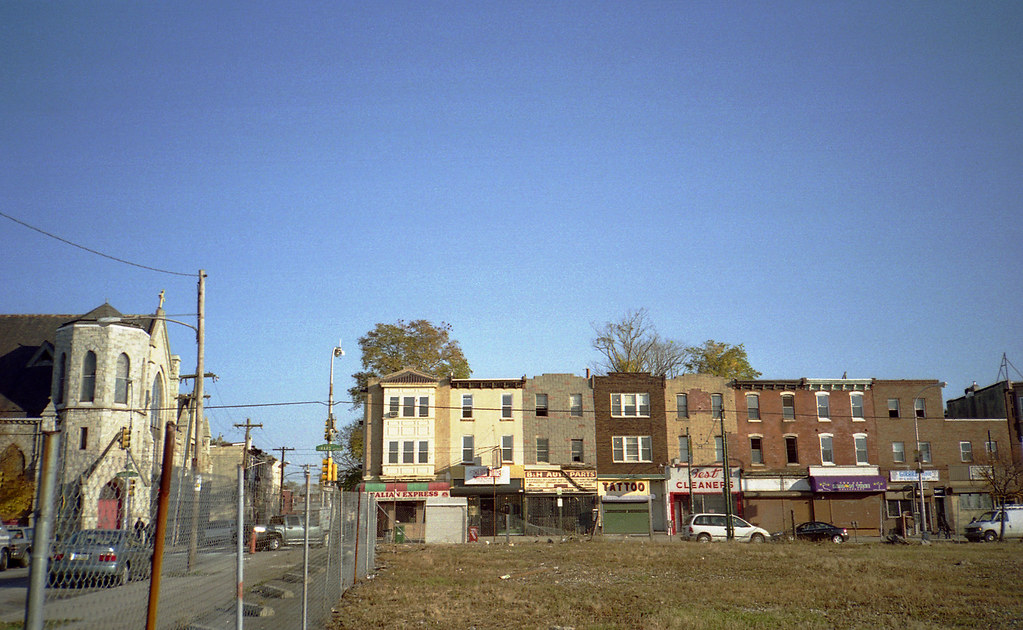 |
| 27th and Girard Avenues. Photo via Flickr user MikeWebkist, Creative Commons License |
Like every rustbelt city in America, Philadelphia's population and economy has shrunk considerably since 1950. As the city has shrunk, vacant and abandoned properties are left dotting the city landscape, awaiting better days. A new report, "Vacant Land Management in Philadelphia: The Costs of the Current System and the Benefits of Reform," was released last week by the Redevelopment Authority of Philadelphia (RDA) and the Philadelphia Association of Community Development Corporations (PACDC), who are trying to grasp the depth of the vacancy problem and what to do about it.
The report estimates that of the 40,000 vacant parcels (identified using Water Department data for plots where water service has been turned off), 31,000 are held privately while 9,000 are public*. The result is serious tax delinquency that costs the city millions in lost revenue each year, and diminished property values of nearby parcels. While some of the properties identified as vacant still have structures on them, most are empty lots. Although these lots are pervasive, they are most concentrated in North and West Philadelphia.
By understanding the conditions surrounding property vacancies, Philadelphia hopes to create a more transparent, simple, and uniform process for the redevelopment of these properties. The report acknowledges that many of the problems and the solutions lie in the city's hands. Although Philadelphia could use its tax foreclosure powers to seize tax delinquent lots, it has been reticent to exercise this power. Now might be the time. Additionally, since no single city agency is responsible for acquisition, parcel assembly, disposition, or even planning for these properties. Mayor Nutter has, however, convened the different agencies responsible for pieces of the vacancy puzzle in order to develop a more coordinated approach.
In some neighborhoods, where the purchase prices of existing buildings exceed the cost of new construction, there is real potential for many vacant parcels to be developed into housing or some commercial use that will add value and vitality. In other neighborhoods where the problems of vacancy are greater, there is potential for some really interesting and different uses beyond housing, such as urban agriculture - a vibrant and important movement in Philly. The city will announce its ambitions for the creation of 500 acres of new open space next month, an initiative that will likely be aided by the extent of property vacancies. Overall, the goal is to reduce the number of long-term vacancies and to encourage transitioning these lots into productive use.
Diversified redevelopment of these vacant parcels would create jobs (construction and commercial enterprises), and generate badly needed revenue. Perhaps more importantly, it could help declining neighborhoods reverse course and stabilize.
*As an aside, the Preservator wonders, however, how many of the 9,000 publicly-owned parcels were razed by the Neighborhood Transformation Initiative under former Mayor John Street? This ambitious initiative (think creative destruction) sought to create development opportunities, but often resulted in blighted, vacant lots.
Related News:
"RDA Vacant Land Report Released" on PlanPhilly
"Growth Report: Reimagining Philly's Vacant Land" on The Griddle
"New Study Puts a Hefty Price on Philadelphia Blight" Jennifer Lin, Philadelphia Inquirer (check out the graphic with this article)

No comments:
Post a Comment